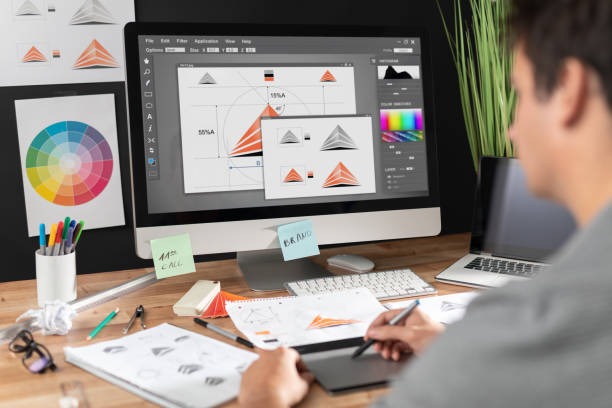Introduction: In the ever-evolving world of interior design, digital tools and software have become indispensable assets for professionals and enthusiasts alike. These powerful resources not only streamline the design process but also empower designers to visualize and execute their creative visions with precision. In this blog, we’ll explore some of the essential digital tools and software that are shaping the future of interior design.

Computer-Aided Design (CAD) Software: Building the Blueprint
- Understanding CAD: The Foundation of Interior Design
- Popular CAD Software: AutoCAD, SketchUp, and Revit
- Creating Detailed Floor Plans and 3D Models: Bringing Designs to Life
- Collaboration and Sharing: Streamlining Communication with Clients and Contractors
3D Rendering and Visualization Tools: Seeing is Believing
- The Power of 3D Rendering: From Flat Plans to Photorealistic Views
- Visualization Software: V-Ray, Lumion, and Enscape
- Creating Realistic Virtual Walkthroughs: Immersive Client Presentations
- Material and Lighting Simulation: Perfecting the Aesthetics
Interior Design Software Suites: All-in-One Solutions
- Comprehensive Tools: Chief Architect, Home Designer, and RoomSketcher
- Space Planning and Furniture Arrangement: Customizing Room Layouts
- Material Libraries and Design Catalogs: A World of Choices at Your Fingertips
- Budgeting and Project Management: Keeping Projects on Track
Color Palette and Moodboard Creators: Setting the Tone
- Digital Color Tools: Adobe Color Wheel, Pantone Studio, and Coolors
- Moodboard Generators: Pinterest, Canva, and Milanote
- Visual Storytelling: Conveying Design Concepts and Aesthetics
Virtual Reality (VR) and Augmented Reality (AR): Immersive Experiences
- VR in Interior Design: Walking Through Virtual Spaces
- AR for Real-time Design Testing: Visualizing Furniture and Decor
- Client Engagement: Enhancing Communication and Decision-Making
Collaboration and Communication Tools: Bridging the Gap
- Digital Presentation Tools: PowerPoint, Adobe XD, and Figma
- Project Management Platforms: Trello, Asana, and Monday.com
- Effective Communication: Keeping Clients and Teams in the Loop
Sustainable Design Software: Eco-Friendly Solutions
- Environmental Impact Assessment: Gauging the Sustainability of Materials
- Energy Efficiency Analysis: Reducing the Carbon Footprint
- Sustainable Design Certifications: LEED and WELL Building Standard
Staying Updated: Continuous Learning in the Digital Age
- Online Courses and Tutorials: Mastering Software Skills
- Interior Design Blogs and Communities: Staying Inspired and Informed
- Professional Development: Adapting to Technological Advances
Conclusion
The integration of digital tools and software into interior design has not only revolutionized the way designers work but also enriched the creative process. Embracing these technologies allows designers to efficiently bring their visions to life, collaborate seamlessly with clients and colleagues, and stay at the forefront of an ever-changing industry. As the world of interior design continues to evolve, embracing these digital tools is the key to unlocking new possibilities and achieving outstanding results in transforming spaces. So, whether you’re a seasoned pro or just starting your journey, don’t hesitate to explore the world of digital tools and software—it’s the bridge to a more efficient and visually captivating future in interior design.
LEARN INTERIOR DESIGNING WITH IWP ACADEMY
FREQUENTLY ASKED QUESTIONS (FAQS)
What are the essential digital tools and software used in interior design?
In interior design, essential digital tools and software include CAD (Computer-Aided Design) software, 3D modeling programs, rendering software, and graphic editing tools like Adobe Photoshop and Illustrator.
Which CAD software is commonly used in interior design?
Commonly used CAD software in interior design includes AutoCAD, SketchUp, and Revit. These tools allow designers to create accurate floor plans, elevations, and detailed drawings.
What is the significance of 3D modeling software in interior design?
3D modeling software (e.g., SketchUp, Blender) allows designers to create lifelike three-dimensional representations of interior spaces. This helps clients visualize the design concept and make informed decisions.
How does rendering software enhance the design process?
Rendering software (e.g., V-Ray, Lumion) adds realistic lighting, textures, and materials to 3D models, providing clients with high-quality visualizations that closely resemble the final design.
